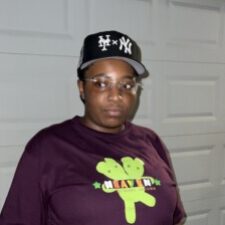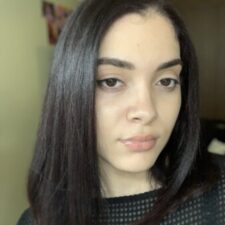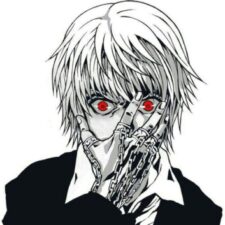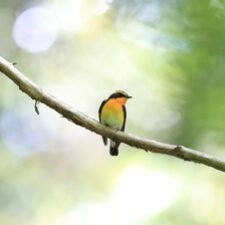You must be logged in to reply to this topic.
- Feb. 2 (b) Comparing film clips from both Lolita movies
-
February 3, 2023 at 9:15 am #89707

Prof. MasielloParticipantPlease watch this comparison of film clips from the two Lolita movie versions. Then post your
responses to the following questions.
https://www.dropbox.com/s/onqnzaqw1rupp39/Lo%20comparisons%20reedit.avi?dl=0
a. Which version, the first in black & white or the second in color seems closer to the novel?
Explain why you say this.
b. What are your opinions of the actors playing Humbert, Charlotte, Lolita, and Quilty?
(Please note: the young actresses playing Lolita were reportedly both 14 at the time of
filming though one looks older and the character is supposed to be younger. Also note that
the 1962 version reflects the cars, clothing, and hairstyles of when it was filmed, while the
1997 version is made to look like the authentic time of the novel – the late 1940s to 1953.)c. What did you notice about the two different versions of Louise, the maid?
d. What differences in tone do you sense in these two films? Why do you think the 1962
version has much humor? Vladimir Nabokov wrote the novel and the screenplay for the
b&w film.e. Are you detecting humor in the novel?
-
This topic was modified 3 months, 2 weeks ago by
 Prof. Masiello.
Prof. Masiello.
February 3, 2024 at 1:32 am #92276
Tshari YanceyParticipanta. The 1997 Lolita is closer to the novel, it went more in depth about how inappropriate the relationship was. The black & white film had some suggestive themes but due to censorship back then it was made to be more light hearted. Looking at the color version we see how tactful he was in getting close to the girl
b. The actor who played Humbert in the 1962 version tried to gaslight the mother into thinking she was crazy for reading his journal almost as he thought about as a misunderstanding. The 1997 Humbert was more concerned and scared of what Charlotte would do after discovering the journal mostly when she said he’ll never have Lolita. Charlotte from the 1997 version seemed more eager to have Humbert, when he was touring the home the flirting was blatant. Quilty in the 1962 version was portrayed as more of a shy-talkative guy but he still seemed creepy. The creepy was more masking it as a “nice guy” facade. In the 1997 version Quilty character sits on a dark porch, the lights go out around him, his tone is deep, and we can’t see his face to much that portrayal made him an a man with obviously evil intentions. Lolita in the newer version was written to be more uncensored promiscuity [you need the noun version of this word].
The 1962 Quilty is funny and creepy. Actor Peter Sellers was given the opportunity to improvise some of his dialogue. A few years later he and director Stanley Kubrick made Dr. Strangelove, for which they both received Oscar nominations in their categories.
c. Louise the maid in the 1997 version seen how odd it was for Humbert to be in Lolita’s room it raised her suspicion. The older version’s Louise isn’t heard as much from just handing over the letter to Humbert. This deemphasis (1962) and later more screentime (1997) seems related to the increased casting of black actors then and now…
d. The older movie is portrayed like a quirky “dark humor” comedy than a man with an illness. The 1997 version shows the real reality sentiment of the book. Humbert 1997 relates more to the written version, it captured the wrongfulness of the relationship and Lolita’s distress a lot better. I think has more humor because Kubrick realized the story was too dark to be taken seriously so he opted for it to be a satire of a man who has a fond weird relationship with a young girl. Yes!
e. Humor in the wit of Humbert then, as in a fairy tale, his wish comes true. He is grotesque and horrible and unbearably funny, and he knows it. He will settle for anything, and does. The “anything” involves marrying Lolita’s widowed mother, Charlotte, with all the lies and swallowing of distaste that this implies. Charlotte promptly arranges to send the child away so that the two “lovers” can be alone together, and Humbert begins to consider the distasteful lies necessitated by murder.
Excellent comments, Tshari.
-
This reply was modified 3 months, 2 weeks ago by
 Tshari Yancey.
Tshari Yancey.
-
This reply was modified 3 months, 1 week ago by
 Prof. Masiello.
Prof. Masiello.
February 4, 2024 at 3:47 pm #92304
Alyssa skerretParticipantA) The color version of Lolita aligns more closely to the novel due to the scenes being more revealing about the relationship between Humbert and Lolita. For example, the 1997 Lolita stuck with the theme of the book and boldly portrayed its darker and intricate parts of the novel. Meanwhile, the 1962 Lolita does stick with the story-line but certain plot details and character actions are cut out or condensed due to censorship
B) Humbert in the 1962 Lolita film motivation and dark desires that he has for Lolita are masked with his sophistication and charm. On the other hand, the 1997 Lolita, his motivation and dark desires aren’t hidden as we see Lolita give a “goodbye kiss” to Humbert before she leaves for camp, which Humbert kisses her back. It’s shocking that it was ‘okay’ and allowed for a 14 year old to play the role of Lolita. Charlotte in the 1962 film was devastated and hurt when she discovered about Humbert and Lolita. Charlotte holds her late husband’s urn
sand cries out to him that none of this would’ve happen if he was still here. In the 1997 film, Charlotte’s anger is revealed and expressed as she shouts at Humbert. The actors who played Quilty, portrayed him differently in both films of Lolita. Quilty is seen to be odd and clueless about the truth of Lolita and Humbert, while Quilty in the 1997 film, his tone of his voice is serious and his face isn’t revealed. His character is revealed from a far distance, sitting on a porch with a dim lighting, which adds suspicion to his character, that he may know about the truth of Humbert and Lolita.Not, clueless, Quilty ’62 is clearly suspicious of Humbert, since he too is inappropriately attracted to Lolita.
C) Louise the maid, in the 1962 Lolita, was less involved in the scenes as we only see her forearm when she gives the letter to Humbert that’s from Lolita. However, in the 1997 Lolita, Louise has more screen time compared to the 1962 Lolita, allowing viewers seeing the full appearance of Louise. Please see what I wrote about this to Tshari (above).
D) Both film adaptations of Lolita are different in various aspects. For instance, the 1962 film was stricter with censorship while the 1997 film was open to explicit portrayal of the novels themes. Lolita in the 1962 film focused on dark humor and was more restrained depiction of the novels controversial elements while the 1997 film focused on the inappropriate relationship between Humbert and Lolita.
E) Humor is detected in Humbert’s internal monologue and through his actions in the film. For example, the film depicts the dark comedic tone as he pretends to be Lolita’s father and engages in awkward interactions with other characters. Which Humbert are you talking about, here, Alyssa?
-
This reply was modified 3 months, 2 weeks ago by
 Alyssa skerret.
Alyssa skerret.
-
This reply was modified 3 months, 1 week ago by
 Prof. Masiello.
Prof. Masiello.
February 5, 2024 at 1:36 am #92346
Mu SongParticipanta. I think the color
edversion was closer to the novel. It seems to go deeper with Lolita and Humbert’s relationship. It reveals more of the sexual things that occurred between the two compared to the black-and-white version where some of the things that happen between them are left to inference due to the censorship the movie had.PLEASE NOTE: THERE IS NO SUCH THING AS A “COLORED” MOVIE. WE JUST SAY “COLOR.” There are also “colorized” movies: B&W films that are colored by computer.
b. Most of the actors in both movies resembled each other with some differences but the most noticeable difference was Quilty. In the black-and-white film, he is very talkative and friendly with Humbert but in the color
edversion of the film, he is very mysterious and doesn’t talk as much. The difference between the personalities of both Quilty is like *two sides of the same coin where they act differently but the main qualities of the character remain the same. *very interesting comparison!c. In the black-and-white film, Louise wasn’t shown as much on screen and simply acted as a maid for the family but in the color
edversion, Loiuse was shown fully and had lines where she felt more as another important character in the story even questioning why Humbert was in Lolita’s room when she delivered the letter. See my comment to another student on this above, please.d. The first film has a lighter tone than the second movie, where it uses more dark humor and insinuates the things that happen between Humbert and Lolita. I think the first film has much more humor than the second one due to the censorship placed on the first film and to make it a lighter film to watch while getting the main points across of what happens throughout the film he uses humor. Yes!
e. Within the novel, I detect hints of humor coming from Humbert as he
monologues[narrates] about his past experiences with Annabel how he could never finish what he started, and how he claims to be good-looking without showing anything to prove it besides his words.Good work, Mu.
-
This reply was modified 3 months, 1 week ago by
 Prof. Masiello.
Prof. Masiello.
February 5, 2024 at 7:22 pm #92389
Angel PadillaParticipantA) First and foremost, I would definitely say that the color version is clos
est[er]to the source material as opposed to the black and white version. This is essentially because the color version highlights the dynamics of the characters way better than the black and white version. I believe this is due to the constant censorship that was happening in 1960’s cinema so it makes sense that the dialogue at the time never really emphasized the relationships that each of the characters had with each other.B) In the 1962 version, the actor who played Humbert portrayed him in a way that felt comical and mischievious. It makes for a lot of tonal inconsistency in my opinion even though you can tell that the screenplay was trying to portray Humbert as a character that has ulterior motives. In the 1997 version, the actor who played Humbert portrays him in a more disturbing way. This is especially shown in the interaction that he has with Lolita because there’s a kiss scene in the 1997 version as opposed to the 1962 one. It’s a genuinely shocking and disgusting scene and the actor who plays Humbert does a great job at displaying just how sinister of a character he truly is. [Do you mean when Lolita is about to go away to camp? She seems to be the aggressor there, and HH seems befuddled!] In my opinion I think both actors who play Humbert in both versions portrayed the characters in a really unnerving way. Moreover, I want to talk about the difference between the 1962 and the 1997 version of Charlotte. In the 1962, Charlotte was genuinely hurt and distraught after reading Humbert’s journal. In the journal, Humbert essentially writes down his overall content with being in a relationship with an underage girl [her own daughter!!]. Charlotte sees this and is constanstly screaming at Humbert in horror to which Humbert insinuates that Charlotte is just hallucinating the whole thing. Charlotte immediately runs outside the house in fear and within that same minute, she gets hit by a car and dies. Furthermore, in the 1997 version, Charlotte recites some of the lines that she’s read in Humbert’s journal and immediately has the same devastated reaciton as Charlotte from the 1962 version. Humbert in this version however says that the journal he’s using is essentially for a novel he’s planning on writing and downplays Charlotte’s emotions in the same way Humbert did in the 1962 version. In my opinion, I think the actor who portrayed Charlotte in the 1962 version was better than the 1997 version because you can clearly feel the sheer horror the character feels compared to the 1997 version. To continue, I want to highlight the idfference of the actors who played Quilty in the 1962 and the 1997 version. Quilty in the 1962 version was definitely a talktative guy who completely overshadowed the conversation between him and Humbert. The conversation has to do with Humbert’s relationship with his wife and daughter and he reveals that his wife got
ran over[hit] by a car. But as the conversation progresses, Quilty is revealed to have the same pedophilic thoughts as Humbert regarding Lolita and it makes for a very uncomfrotable [and funny to the audience] scene. In the 1997 version, Quilty is seen in a much more foreboding and mysterious way as he appears as a shadowy figure that Humbert seems haunted by. It’s such a massive tonal shift compared to the 1962 version and it’s something that I honestly prefer in my opinion. This is the because the actor who is playing Quilty in the 1997 version is portrayed as someone who has a hidden agenda in mind and it honestly makes for a really intimidating depiction of the character. Lastly, I would like to highlight the difference between Lolita in both the 1962 version and the 1997 version. The 1962 version is something I prefer over the 1997 because the actress playing Lolita displays a more censored portrayal of the character as opposed to the 1997 version. The 1997 version of Lolita features a lot of scenes from her and Humbert that are very uncomfortable and disturbing to watch. Very interesting comments, Angel.C) What I like about Louise in the 1997 version of Lolita is that she is given way more screen time compared to the 1962 version. In the 1962 version, Louise is barely shown and is just giving the letter to Humbert so that he can read it. In the 1997, Louise grows more suspicious as she wonders as to why Humbert is constantly interacting with Lolita and is always in her room.
D) The difference in tone is clearly evident between both versions of Lolita. The 1962 version is definitely a lot more comedic in a dark way compared to the 1997 version. The 1962 version has a lot more humor and I think it’s because of the heavy censorship that was around the time in 1960’s media. It makes sense that a story like this would be censored so much back then compared to now. This is different in the 1997 version of Lolita because the story is depicted in a much more sinister way in order to highlight the horrors of Humbert’s mind.
E) Throughout the novel, there definitely seems to be a tinge of humor with the character of Humbert. I can definitely tell how well it’s replicated in the 1962 film adaptation and to be honest, it’s the type of humor that just reveals how alarming of a character Humbert is. He’s a protagonist that I genuinely despise throughout the story. [Maybe you will feel differently once you get to the end of the book and the films]
-
This reply was modified 3 months, 1 week ago by
 Prof. Masiello.
Prof. Masiello.
February 8, 2024 at 7:57 pm #92547
Angel OrdonezParticipantAfter watching the video, I’d have to say that that 1997 version was more accurate when it comes to the novel. There is more portrayal of Humbert’s character and this allowed for proper context for their dynamic. This version of the film was also tailered to the timing details of the novel.
Angel, I get your point but this need rewording. You are noticing the period detail (clothing, cars, music) as being accurate in 1997 for when the story takes place 1947+, whereas the 1962 version looks like 1962’s clothing, cars, music.
b. What are your opinions of the actors playing Humbert, Charlotte, Lolita, and Quilty?</p>
Humbert was played more seriously in the 97 version. The scene where Humbert is being questioned by the police officer is a good example. The black and white version seemed a bit more comical. The officer himself was more annoying than serious. The coloredversion was vise versa. I also recall the hotel scene of Lolita and Humbert laughing and being flirtatious emitted from her. This vybe wasn’t always apparent in the coloredversion. In the coloredversion, I get more tension as if something is noticeably wrong. Even when Lolita smiles, it’s eerie and uncomfortable. Humbert even seems more serious. Especially with them kissing. There was a sense of honesty and transparency with the acting in the 1997 version of the film. However, There was also a little bit more freedom with creative expression and showing honest artwork. The actors did a good job.<strong style=”box-sizing: border-box; font-family: ‘Open Sans’, Helvetica, Arial, sans-serif; font-size: 14px;”>PLEASE NOTE: THERE IS NO SUCH THING AS A “COLORED” MOVIE. WE JUST SAY “COLOR.” There are also “colorized” movies: B&W films that are colored by computer.
c. What did you notice about the two different versions of Louise, the maid?</p>
I noticed Louise the maid was a bit more sassy. I also got the sense she was more present in this version of the film as well. Though, Ive only scene both versions once.Correct, Angel. See above comments for an interpretation of why.
d. What differences in tone do you sense in these two films? Why do you think the 1962<br style=”box-sizing: border-box;” />version has much humor? Vladimir Nabokov wrote the novel and the screenplay for the<br style=”box-sizing: border-box;” />b&w film.</p>
When it comes to tonality, the coloredversion of the film was much more disturbing and eerie. It gave me a feeling of this being wrong whereas the original wasn’t a bit more… playful? It almost made it seem like this love affair was sort of innocent and normal. Though, this is the case for the 1997 version. However wit this film, I am more of a fan of the 1997 version. It’s real and tells the story better. It evokes conflicting feelings and thoughts.
<p style=”box-sizing: border-box; margin: 0px 0px 15px; font-size: 14px; font-family: ‘Open Sans’, Helvetica, Arial, sans-serif;”>e. Are you detecting humor in the novel?</p>
I am! I find it to be dark and kinda funny at times. Yes! HH’s sarcasm is very funny.-
This reply was modified 3 months, 1 week ago by
 Prof. Masiello.
Prof. Masiello.
-
This reply was modified 3 months, 1 week ago by
 Prof. Masiello.
Prof. Masiello.
February 8, 2024 at 9:00 pm #92551
TravisBowryParticipantA) In my opinon the 1997 version seems closer to the novel of Lolita. The black and white version appears to leave more of the actions between the main characters up to interpretation while the later version is more explicit in showing the relationship between Lolita and Humbert.
B) The actors in both movies seem to have adapted their roles accurately to the books but adding their own personalities to the role. For example when the 1997 Humbert acted calm and speechless when his journal was found but the black and white version he acted more in a panic state and tried to explain his actions.
C) Louise the maid had more screen time in the 1997 version of the movie. This extra screentime gives her character more depth as she wondered why Humbert was in Lolita room. In the black and white version this depth is missing.
D) The black and white movie appears to have more humor in it. This could be due to it having more censorship in the topic. The 1997 version takes a serious tone and since its more explicit its probably harder to add humor into this kind of movie. Yes, Travis, and that is a good point.
E)In the novel I find humor in the way Humbert talks about himself. I’m not 100% sure that the movie versions of his characters were able to capture those thoughts on screen. You will see…
-
This reply was modified 3 months, 1 week ago by
 Prof. Masiello.
Prof. Masiello.
February 9, 2024 at 12:20 am #92563
Bryan JimenezParticipant<strong style=”box-sizing: border-box; font-family: ‘Open Sans’, Helvetica, Arial, sans-serif; font-size: 14px;”>PLEASE NOTE: THERE IS NO SUCH THING AS A “COLORED” MOVIE. WE JUST SAY “COLOR.” There are also “colorized” movies: B&W films that are colored by computer.
a. In my opinion, the color
edversion is closer to the novel because it has more emotion since there is color compared to the black-and-white version as during that period there was more strict censorship that made the movie less “intense.”But, Bryan, color vs. B&W has nothing to do with emotion.
b. Most of the actors seemed to have played their roles pretty well but Quilty was less interactive in the color
edversion compared to the black-and-white version. Although the coloredversion portrayed the characters better Humbert seems more serious compared to how he is in the other version.You mean Quilty is o screen more in 1962, right?
c. The thing that I noticed about the two different versions of Louise is in the black-and-white version, she didn’t seem to be playing a major role but in the color
edversion, she had way more lines and felt more a part of the story. The coloredversion gave her more character.d. The difference in tone that I saw in these two films is that the black-and-white version seemed less serious compared to the color
edversion. The 1962 version has much humor due to the censorship that it had.
e. In the novel there seems to have some humour in it as themonologue[narration] is coming from Humbert’s point of view.Thanks.
-
This reply was modified 3 months, 1 week ago by
 Prof. Masiello.
Prof. Masiello.
February 9, 2024 at 7:11 pm #92591
MehrinisoParticipanta. The second, in color, is closer to the novel because it goes into deeper details to give the audience a better understanding of the scene. In other words, the color version of the movie gives away the unsuitable relationship between an older man, Humbert, and a young girl, Lolita. There isn’t much censorship compared to the black-and-white version and that’s how it gives off much detail that seems to fit with the book closely. In addition, the 1962 version seems to be turned to comedy and doesn’t focus on the seriousness of the scenes/events.
b. The actors Humbert, Charlotte, Lolita, and Quilty played their roles well in both versions of the movie. However, Humbert is seen to be more serious and dedicated to his role in the 1997 version compared to the 1962 version. In addition, the actor who played Quilty (1997) showed up on the screen for less time even though he was playing his role well which left the audience with wonder because he should’ve played for a longer time. He is also talkative and doesn’t let the other person (Humbert) talk. In addition, Charlotte (1962) seems to be stronger emotionally, while in 1997 Charlotte bursts into tears when Humbert’s secrets are revealed ( Diary found).
c. Louise (1962) was shown not even for half a minute and we could barely see what she looked like while the maid from the 1997 version seemed to be on camera more. Louise (1997) doesn’t hold back and she seems to be bold as she hands the letter to Humbert.
d. The difference between the two films is that Lolita (1962) seems to be turning the scenes into comedy while cutting out the small details and the Lolita 1997 version includes all the details and seems to be more serious and dramatic. The 1962 version has more humor because if it was taken too seriously the movie would have been said to be sexual child abuse since Lolita was still a child.
e. Readers can detect the humor in the novel. I think mostly Humbert is the one who has humor because his sarcasm just makes the novel more entertaining and interesting.
-
This reply was modified 3 months, 1 week ago by
 Mehriniso.
Mehriniso.
February 11, 2024 at 3:58 pm #92611
Jennifer CParticipanta- Both black & white and color version both use the same book as the source however the color version showed deeper feelings in a way that clearly shows their deep relationship while the black & white tends to show more tone
b-I think all the actors playing on both films did a pretty good job in portraying each chacters personalities, tone, and perspective. Which is important when playing in a film that has a dark tone and is set in a different era.
c- The difference between the different versions of Louise would be her appearance and the way she interacts with Humburt.
d- Both films have different tones, in the 1962 version it is shown in a more lighthearted tone while the 1997 version is a more dark tone which reflects humor and sarcastic themes from the text. Vladimir’s role in the screenplay was to most likely add humor to the 1962 version while the 1997 version was to show more dramatic elements.
e-Humor does exist in Nabokov’s work Lolita. The author uses play on words, irony, and sarcasm to enhance the story. The novel’s various tones allows for a range of interpretations, and the movies adaptations capture some of the humor. The 1962 version specifically, reflects Nabokov’s novel and the intended tone of the novel.
February 22, 2024 at 8:23 pm #92884
NailaParticipanta) The film in color seems to be closer to the novel. The way the scenes are played corresponds with how it was written. The colored film depicts exactly how each character was and how inappropriate the relationship between Lolita and Humbert was.
b) The 1962 version wasn’t accurate I feel. In this version, Lolita is not as childlike as she was in the book when they first met, Charlotte’s image and attitude are not conveyed correctly, Humbert is not as handsome as he described himself in the novel, and Quilty is timid, talkative and annoying which also wasn’t described in the book. I believe all the characters were perfectly depicted in the later version. Their appearances met my expectations after the read and their behavioral aspects were up to par.
c) In the earlier version she wasn’t really involved. Was only there for a glimpse to load the car and hand Humbert the letter. In the second version, there was more to her character. She picked up on Humbert’s sketchy behavior.
d) The first film was lighthearted while the second film had more emotion. I believe that this was influenced by the decade that it was filmed. I think the 1962 version had to have more humor to mask the perversion otherwise the audience would have an extremely difficult time digesting the film.
e) I personally do not pick up any humor throughout the novel (may be due to the topic at hand).
-
This topic was modified 3 months, 2 weeks ago by
You must be logged in to reply to this topic.


